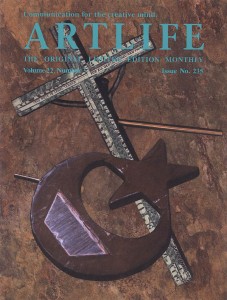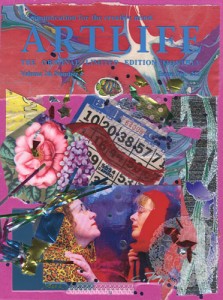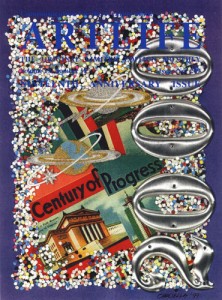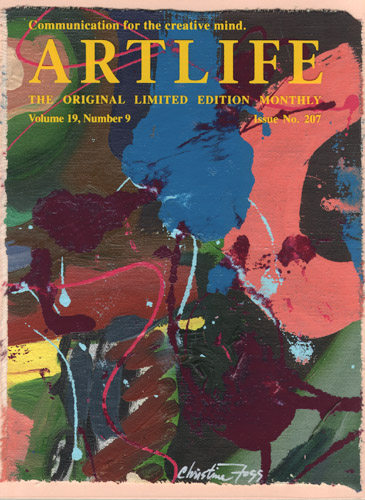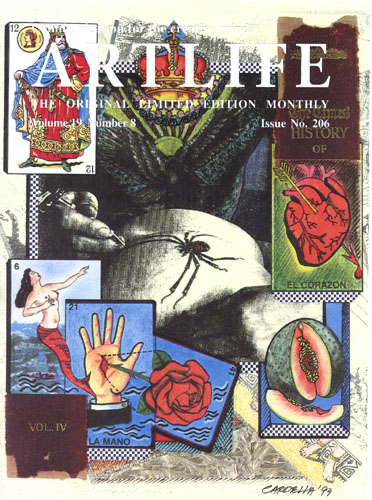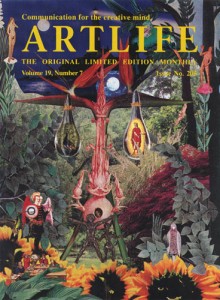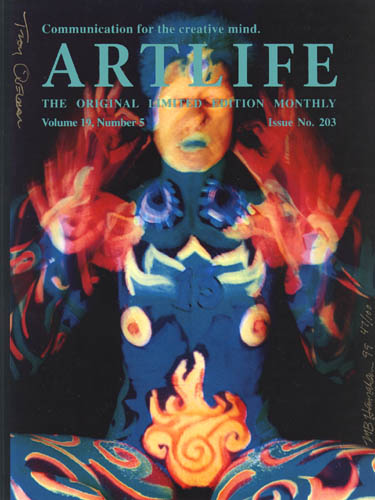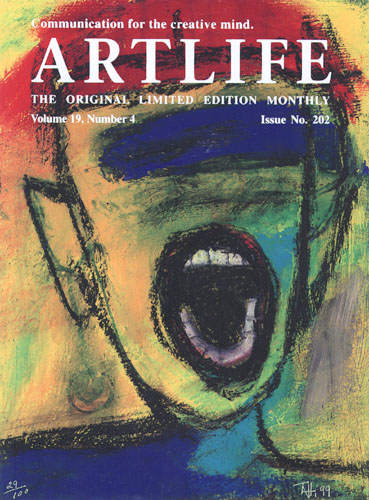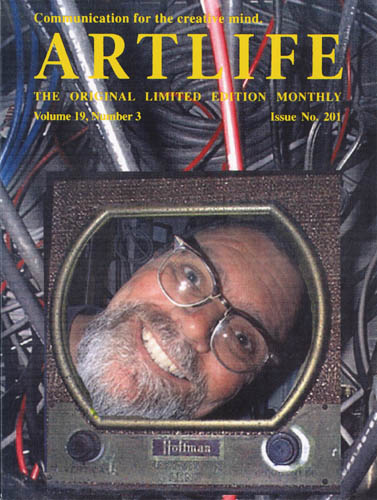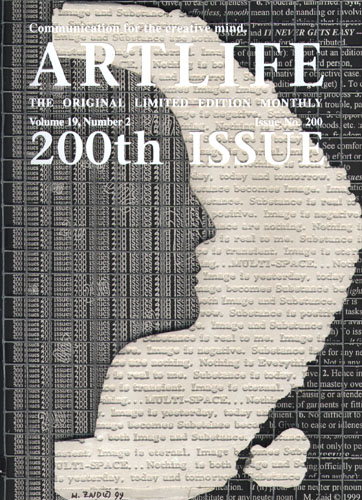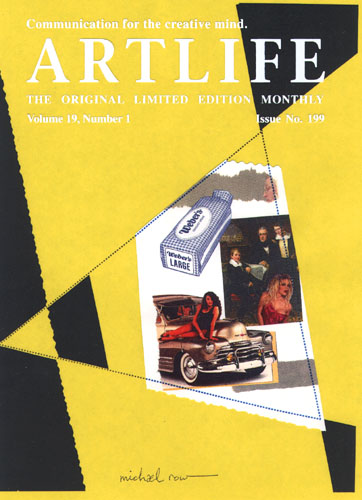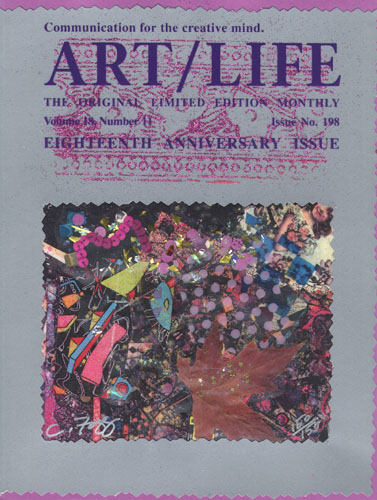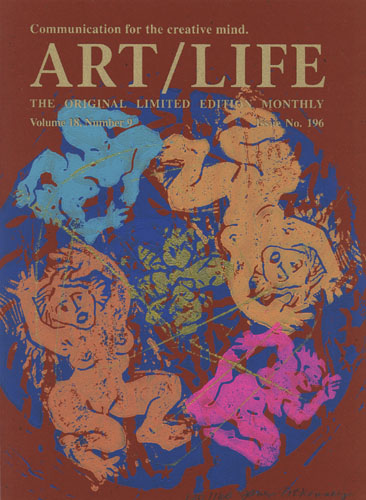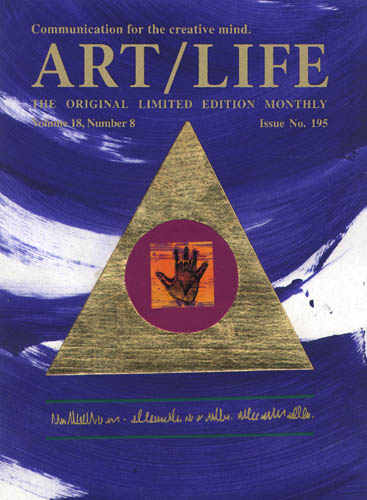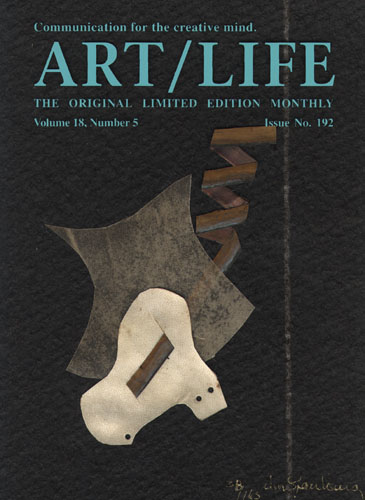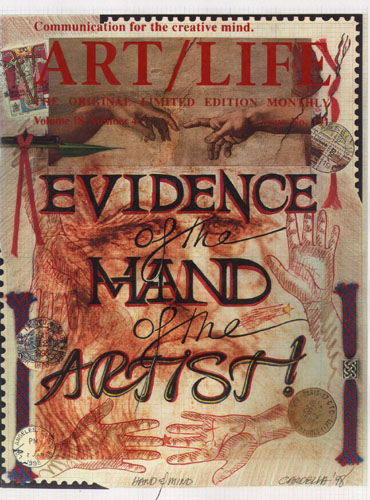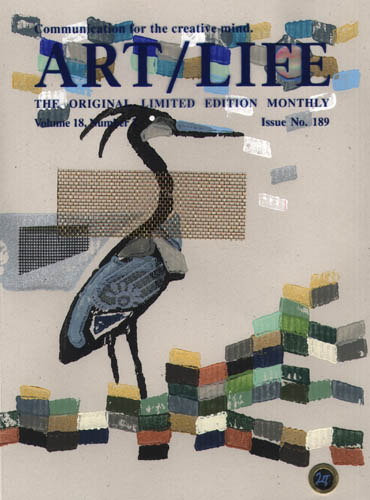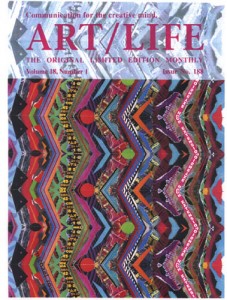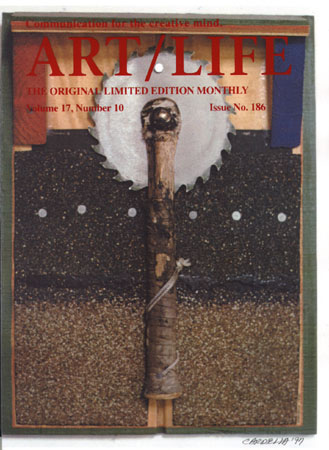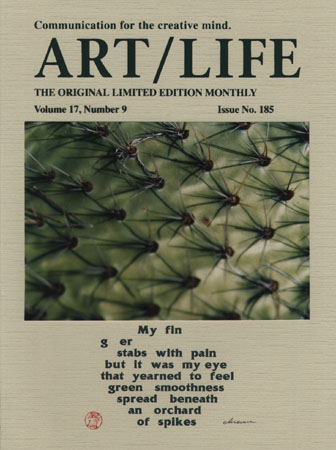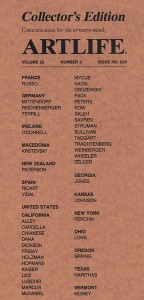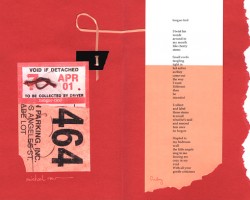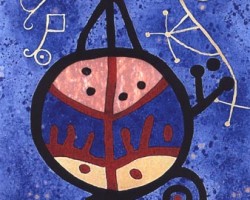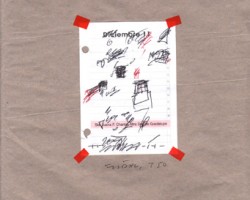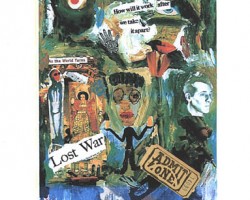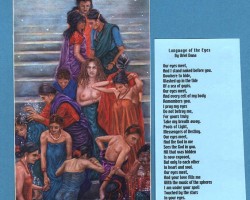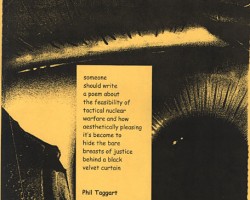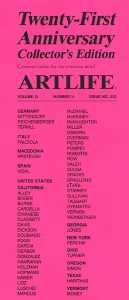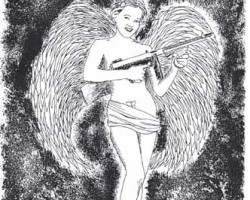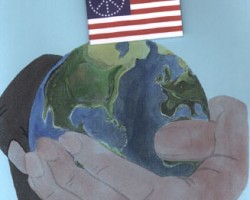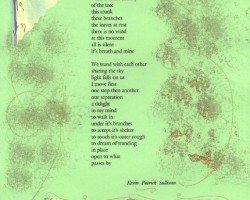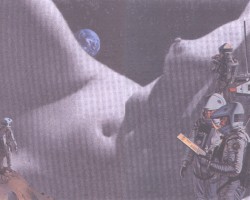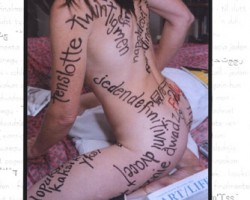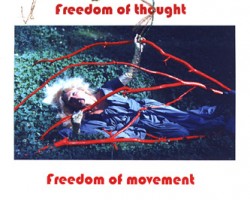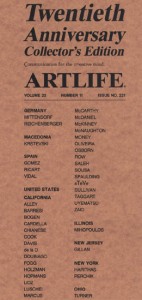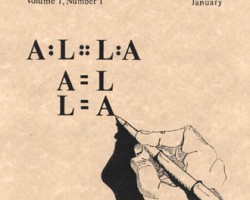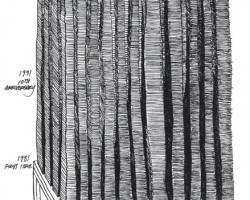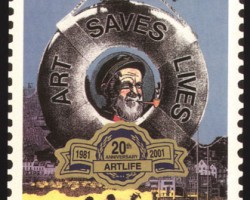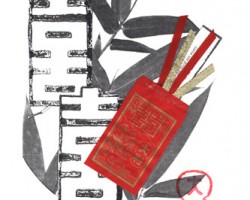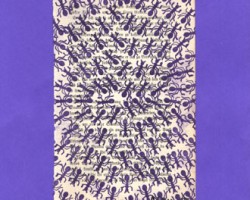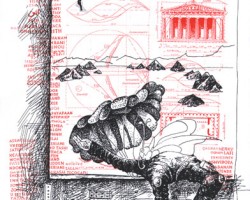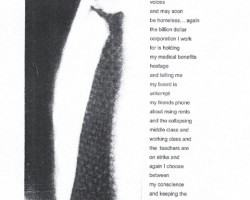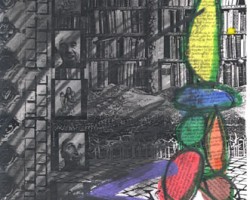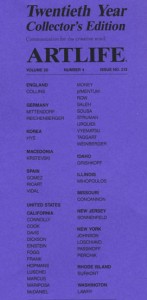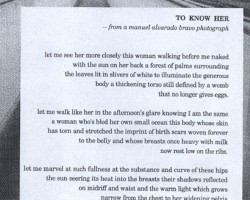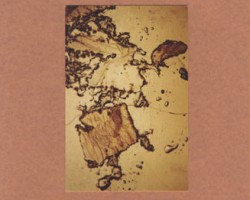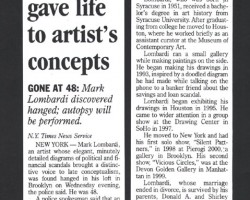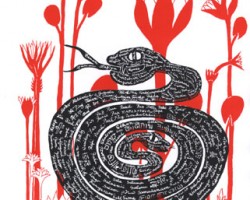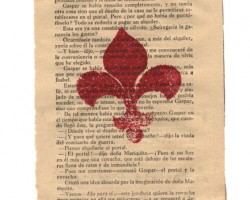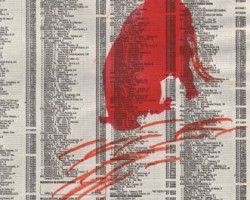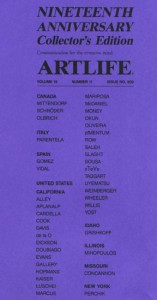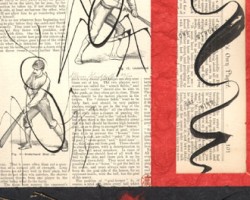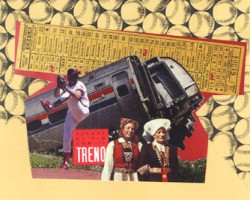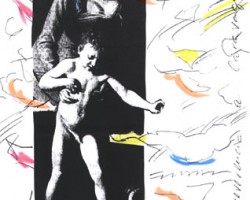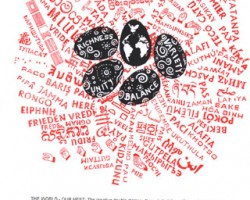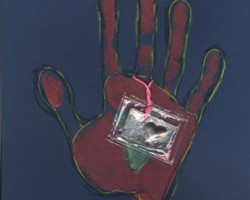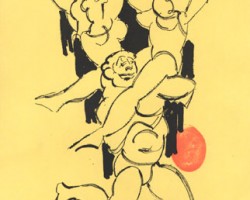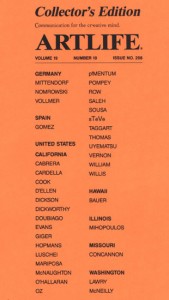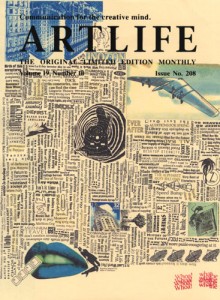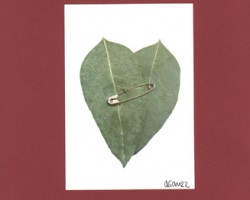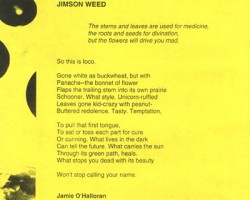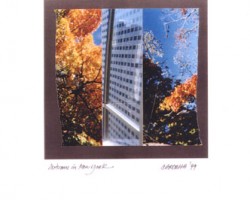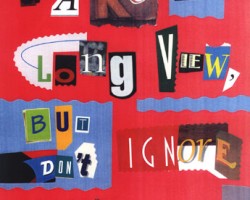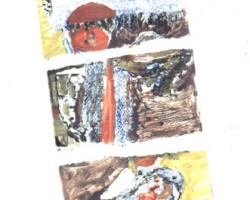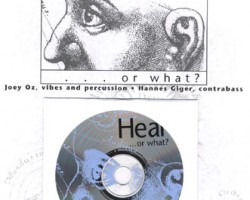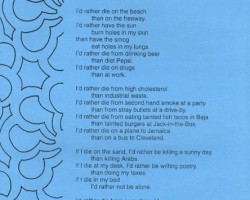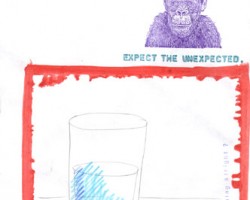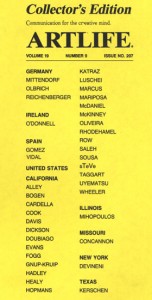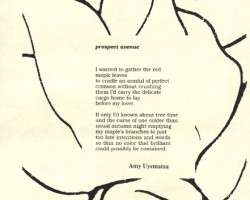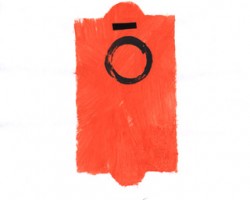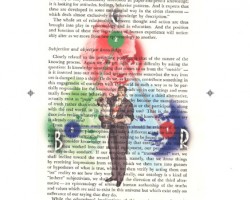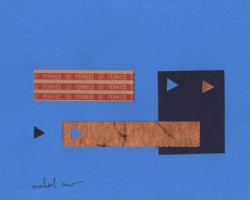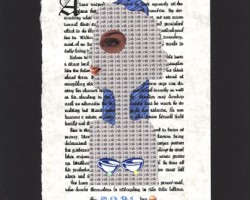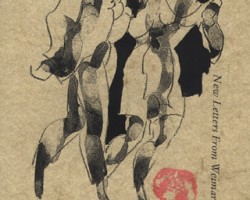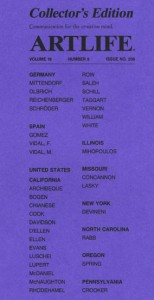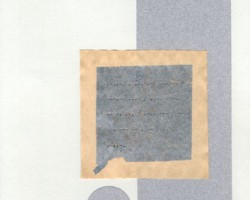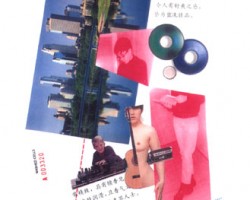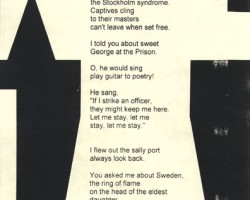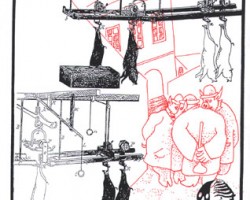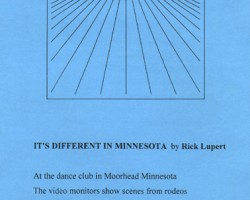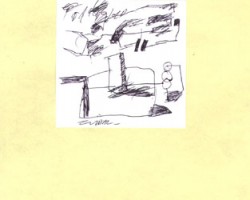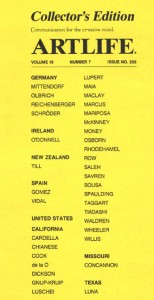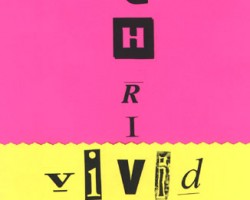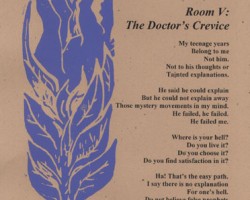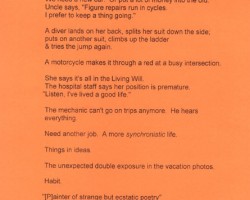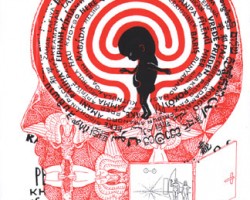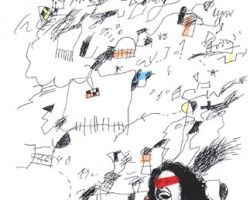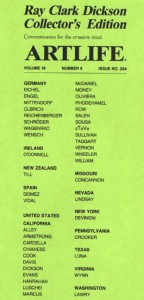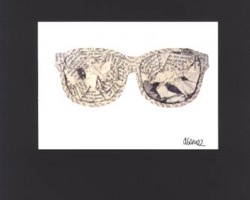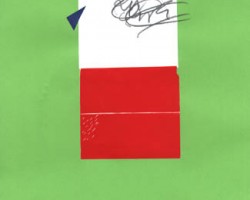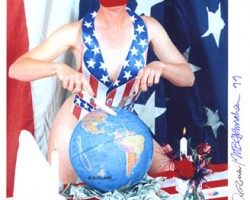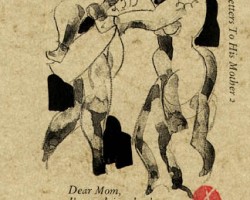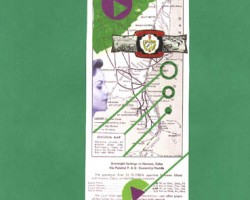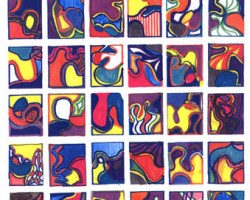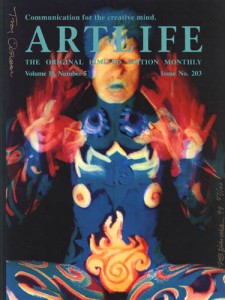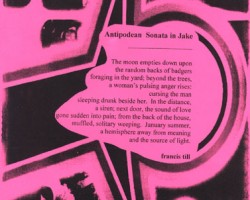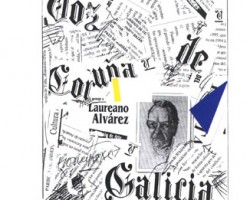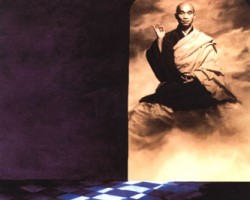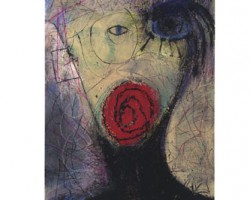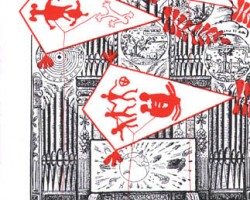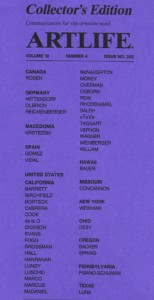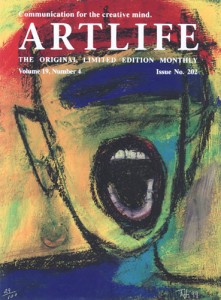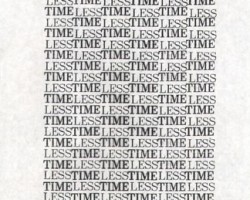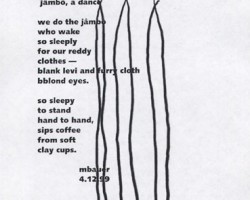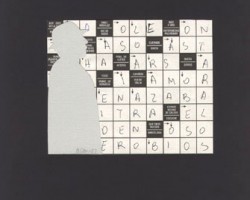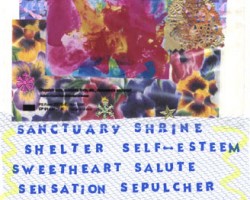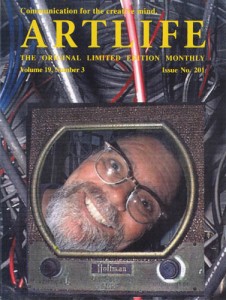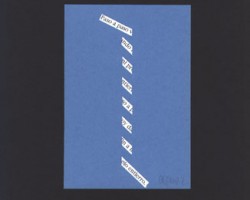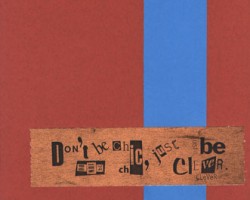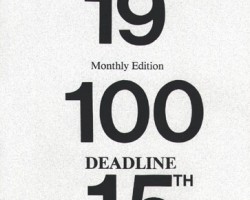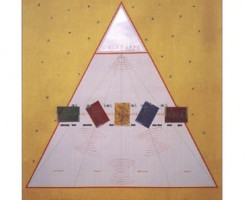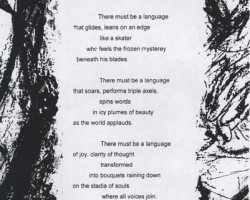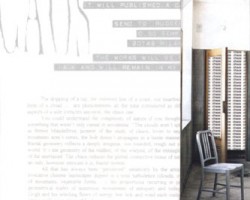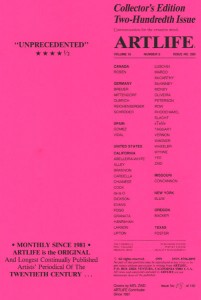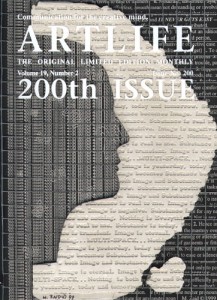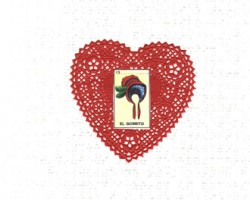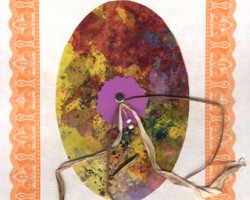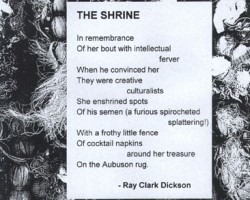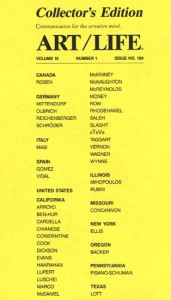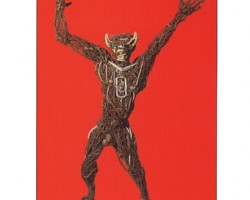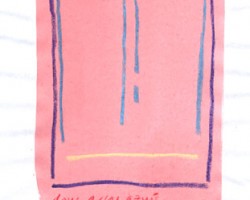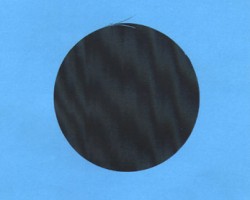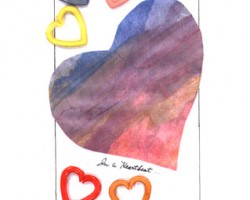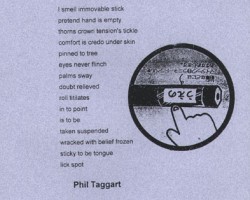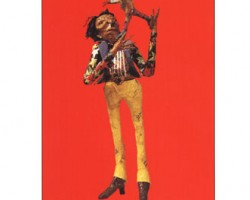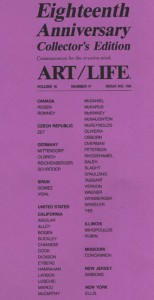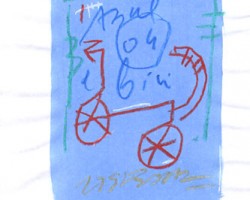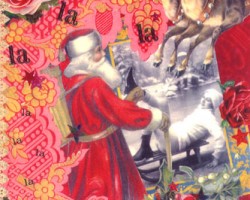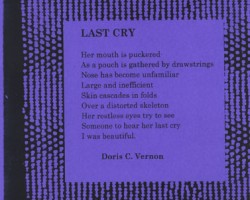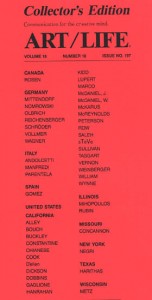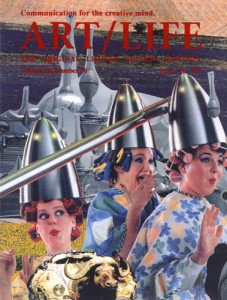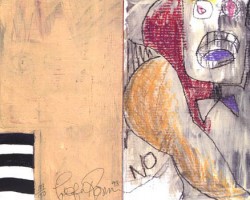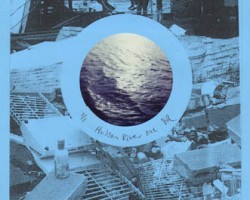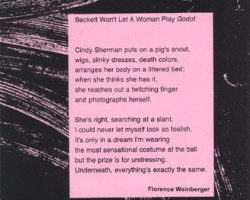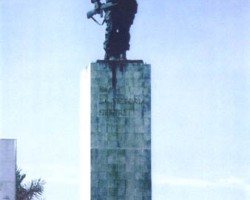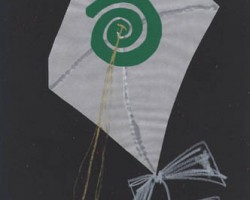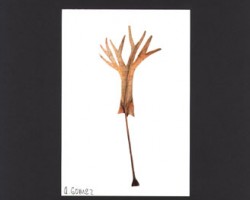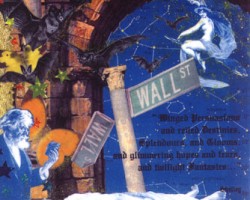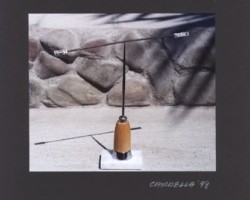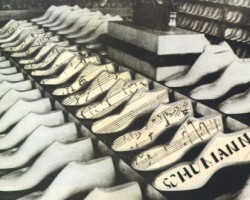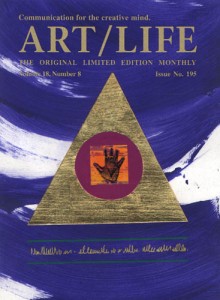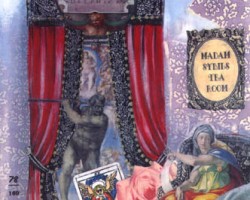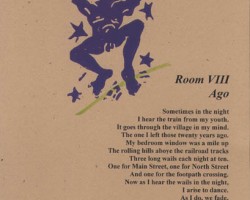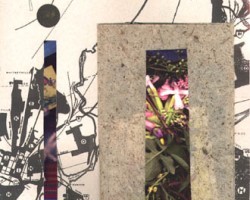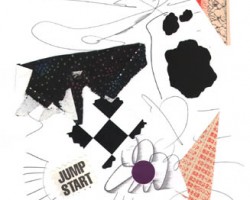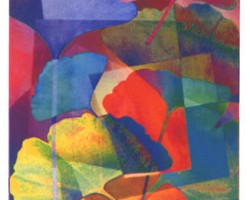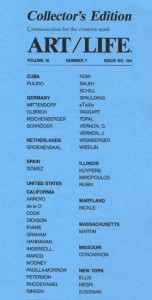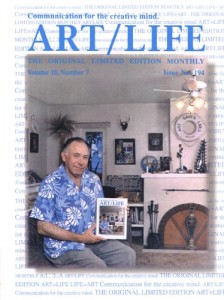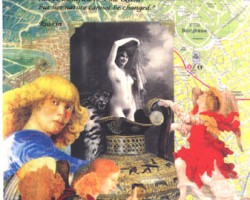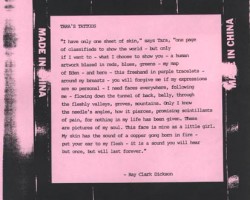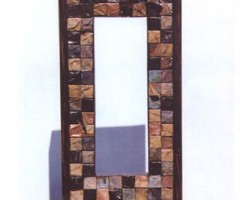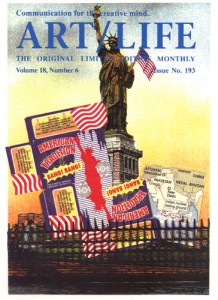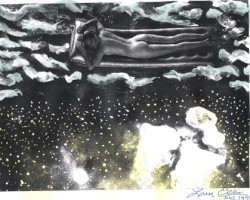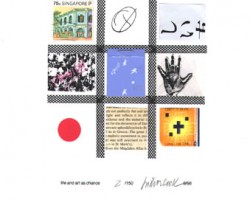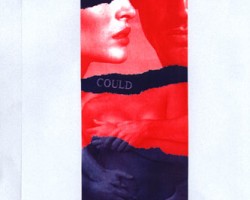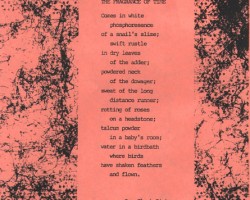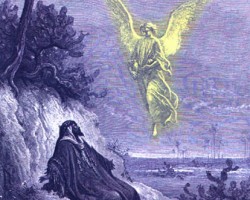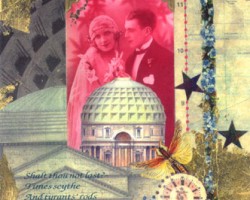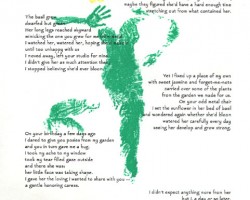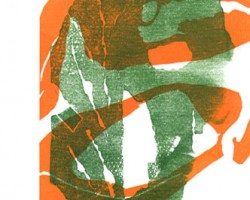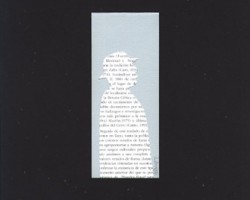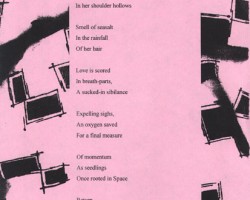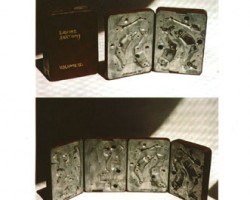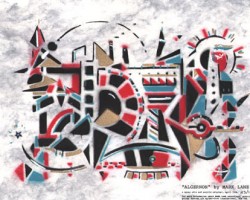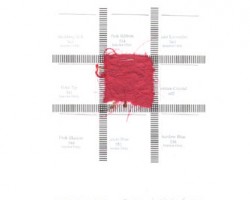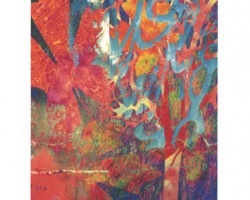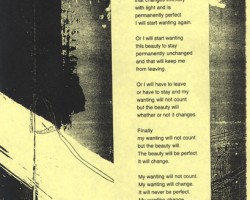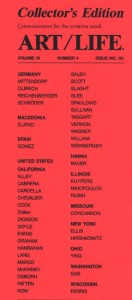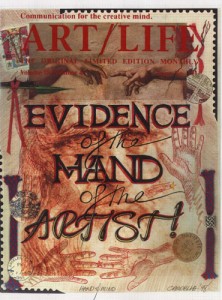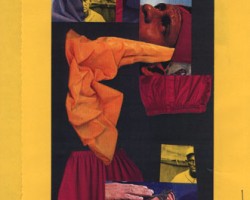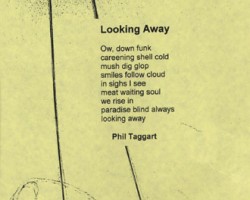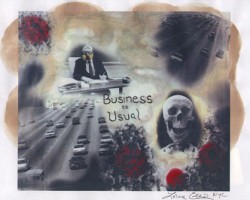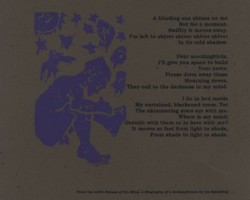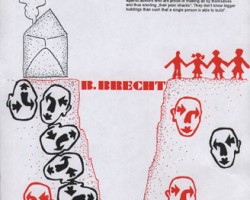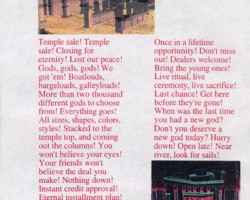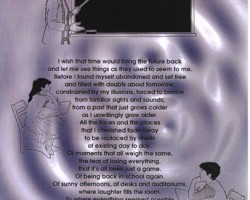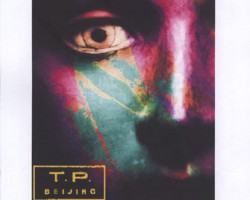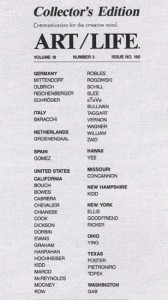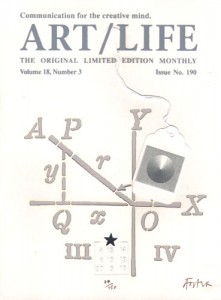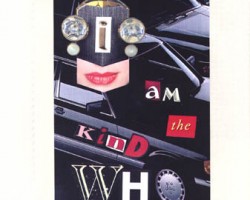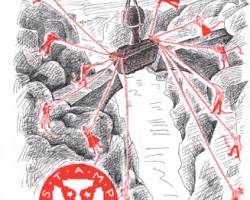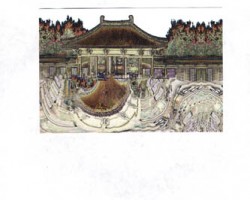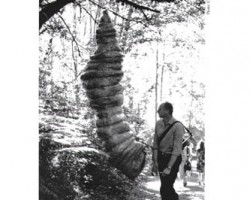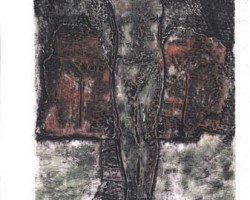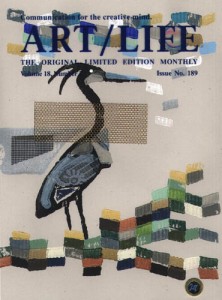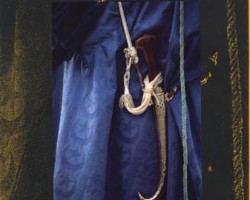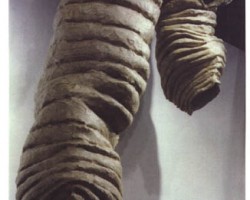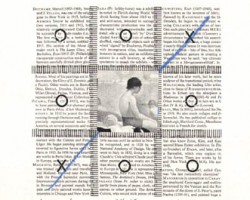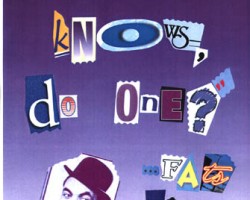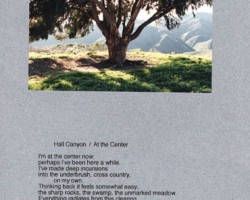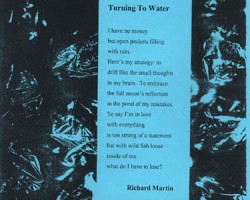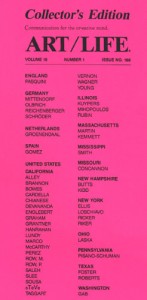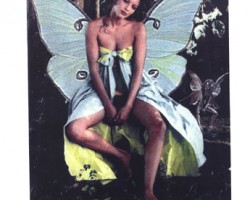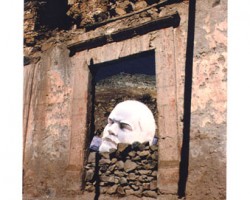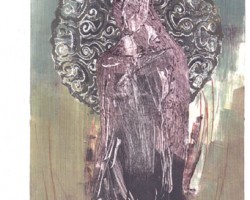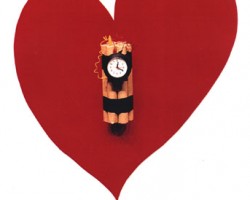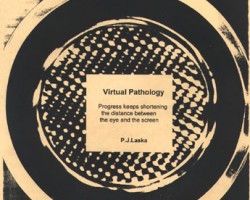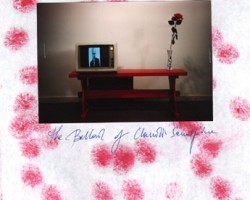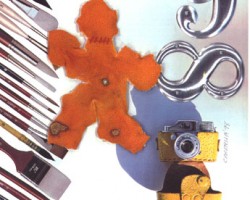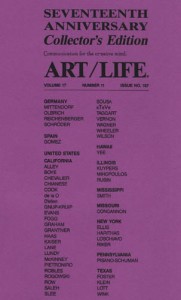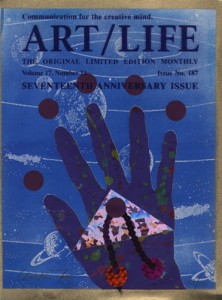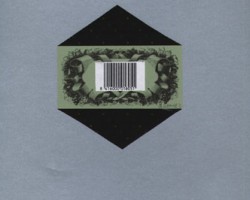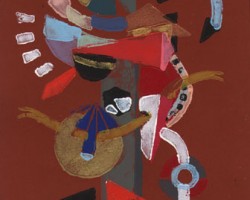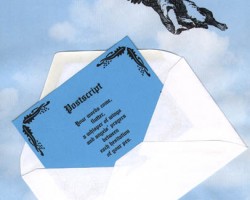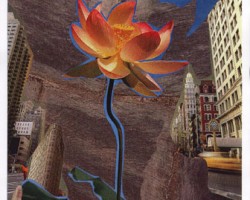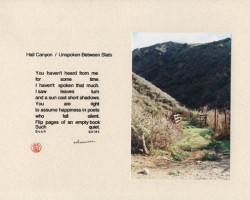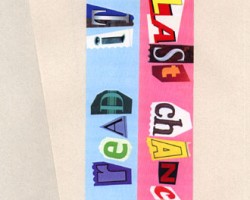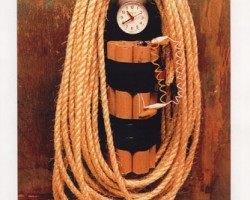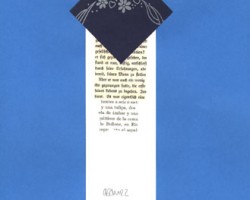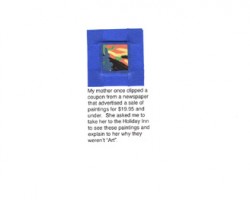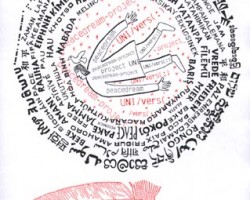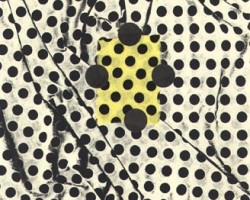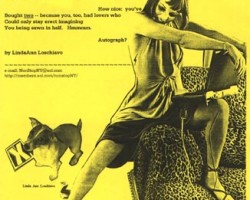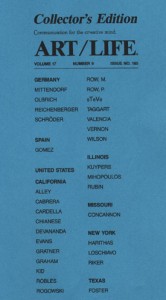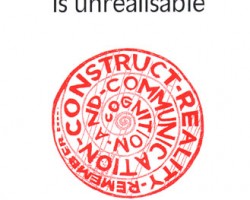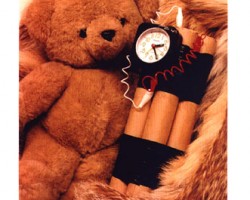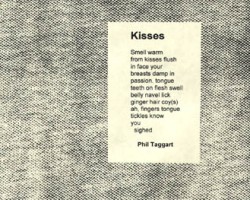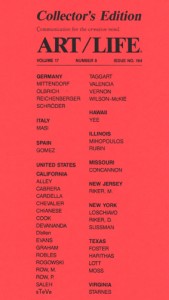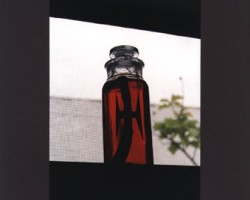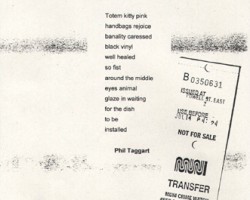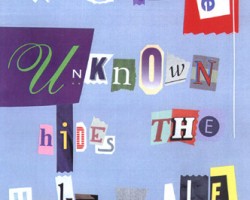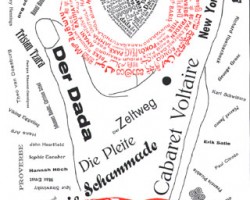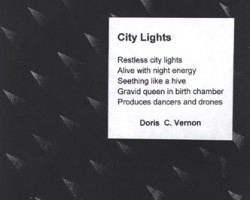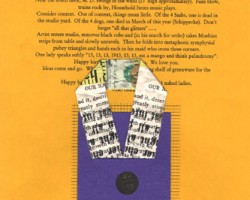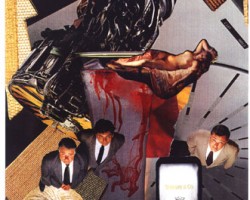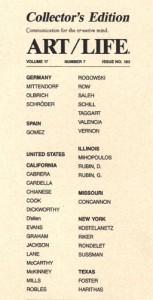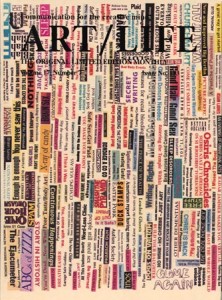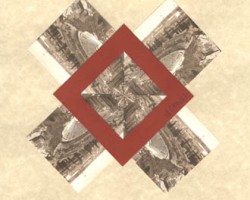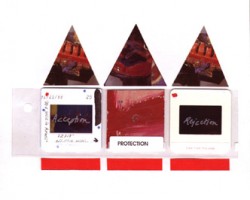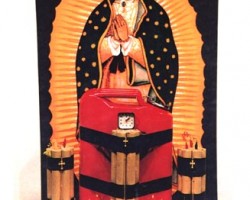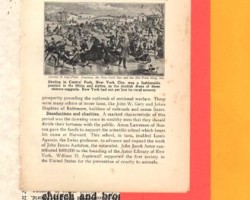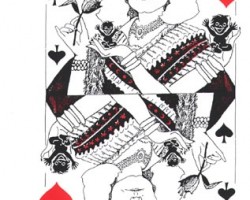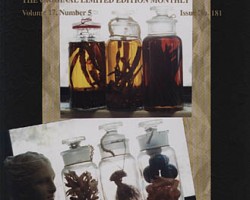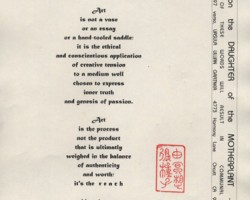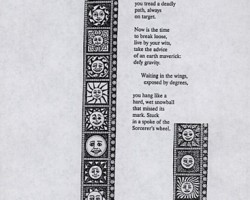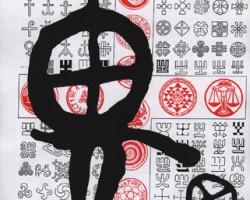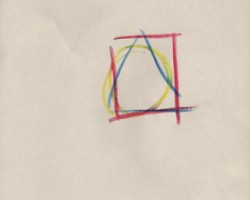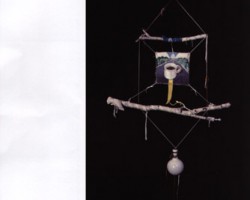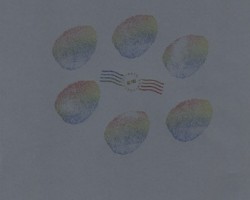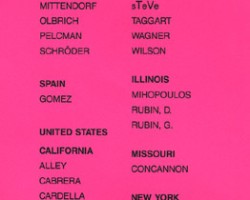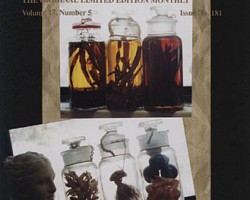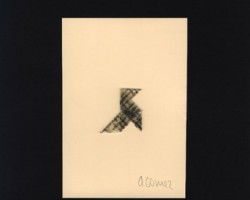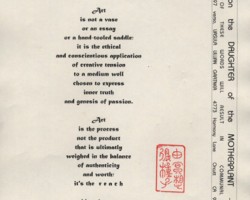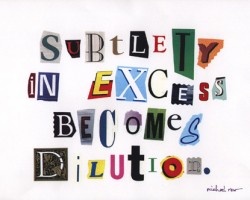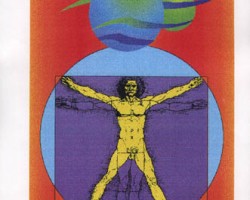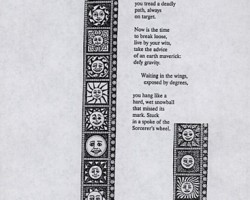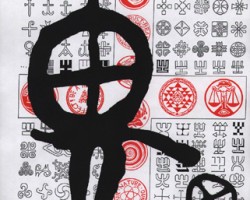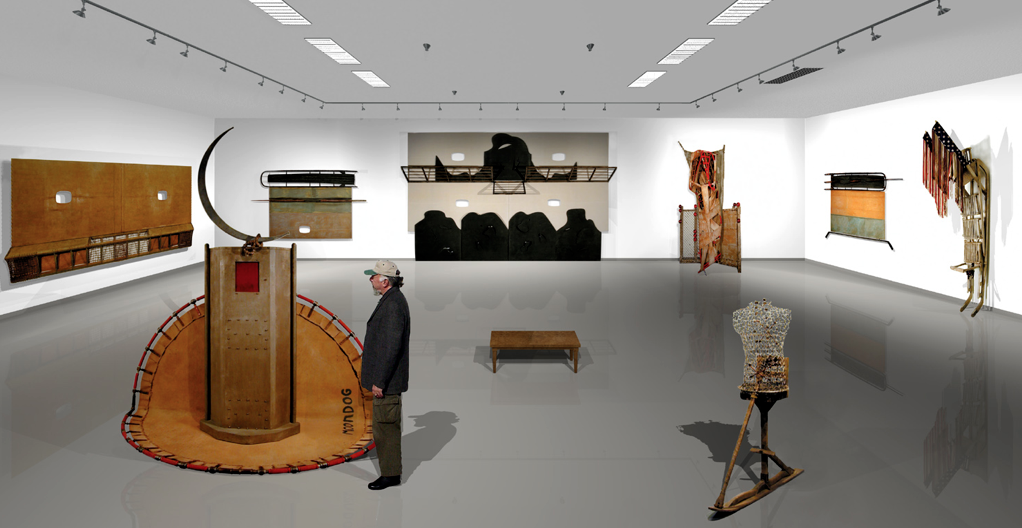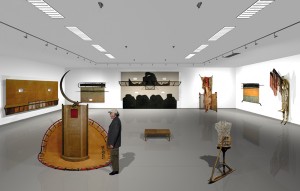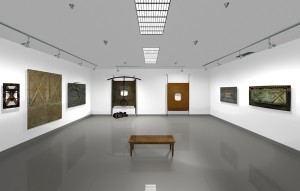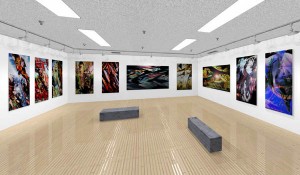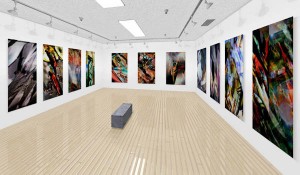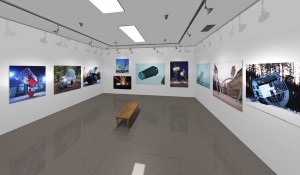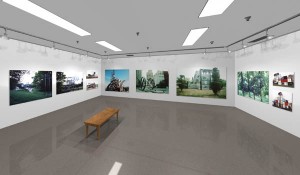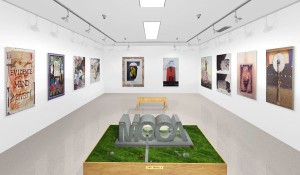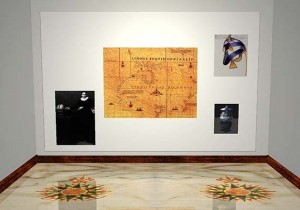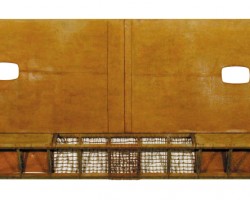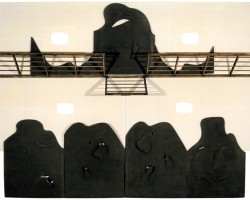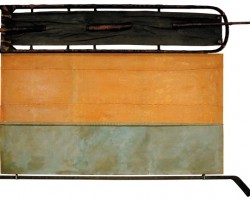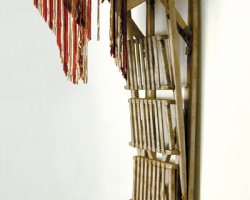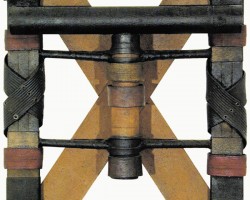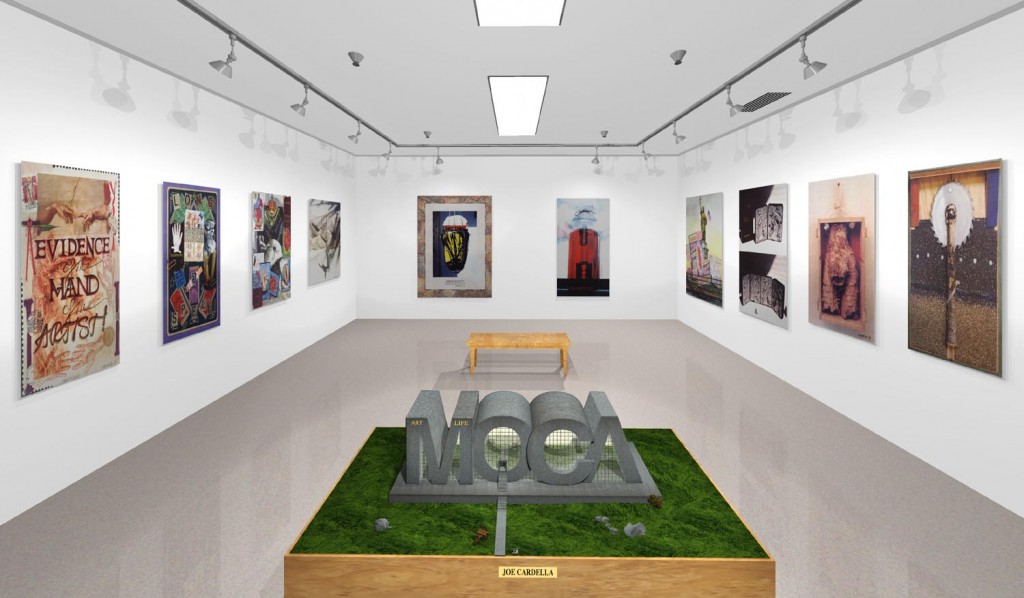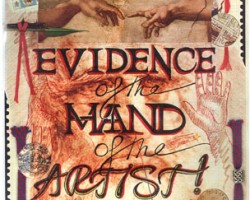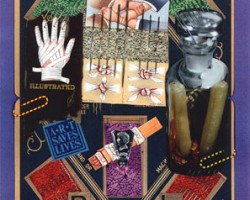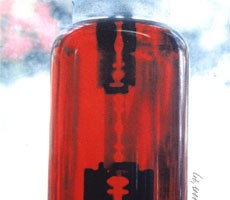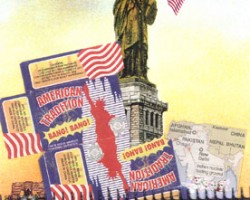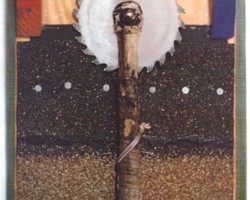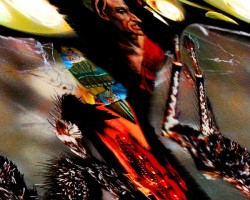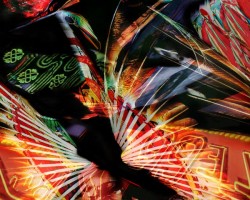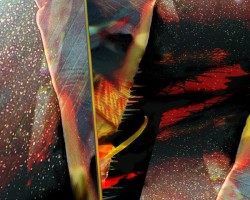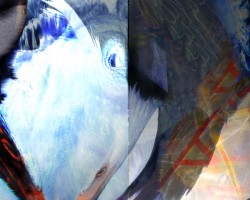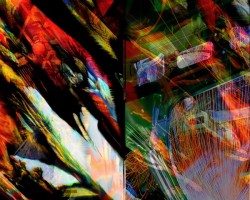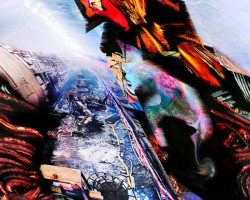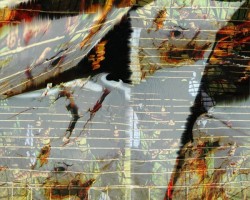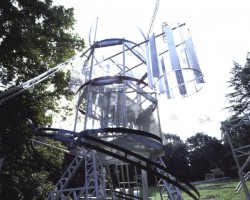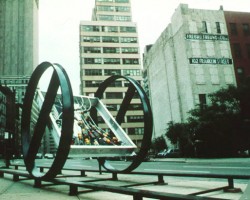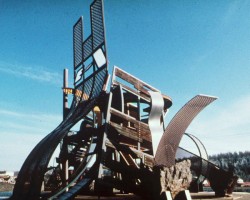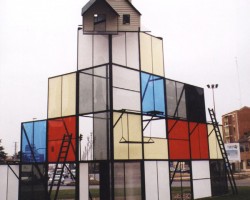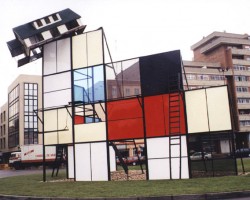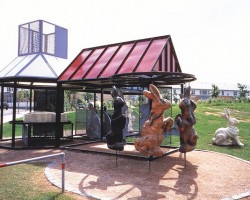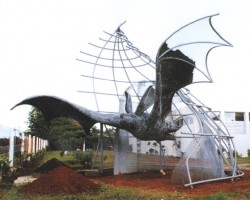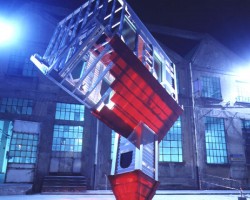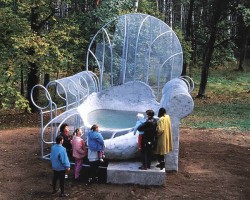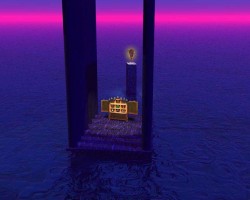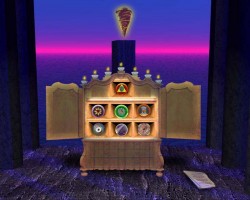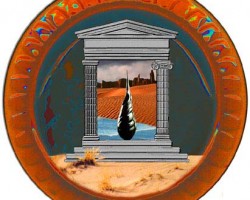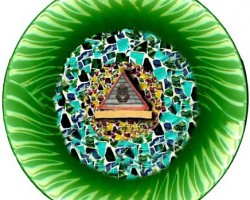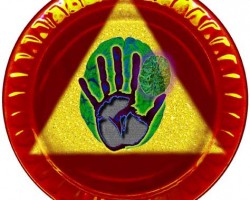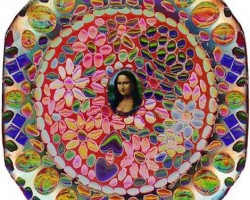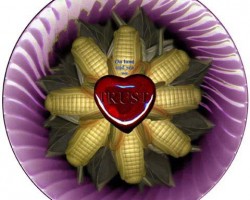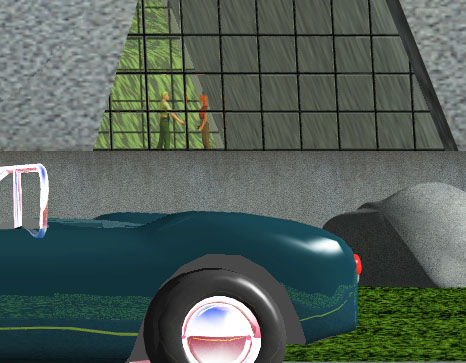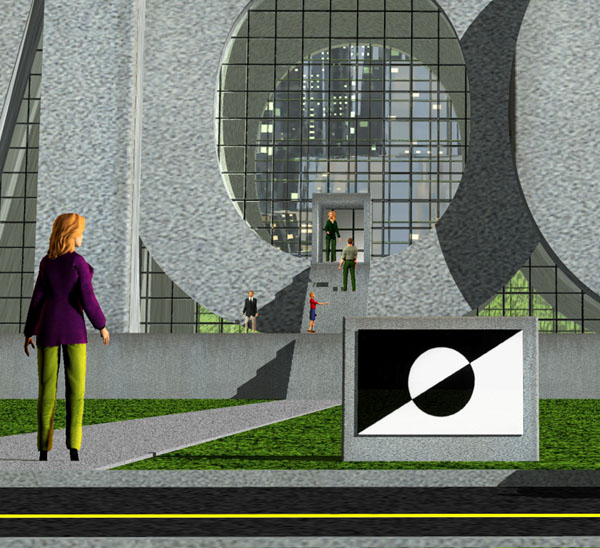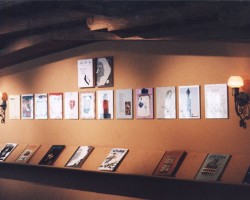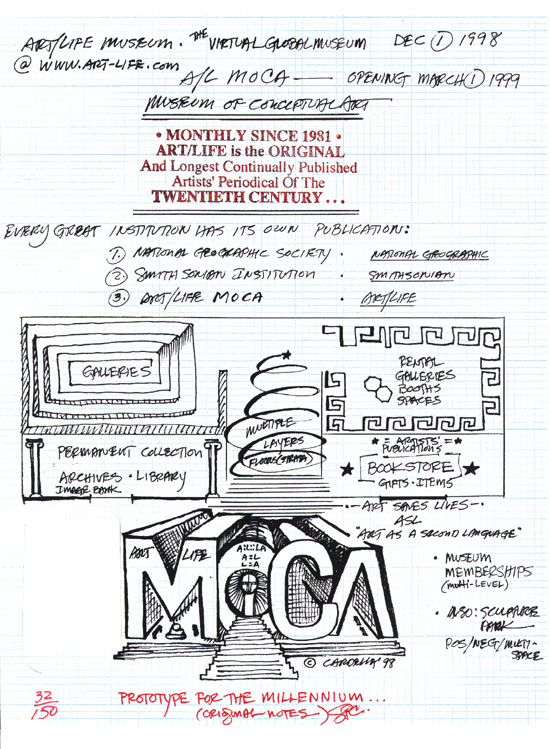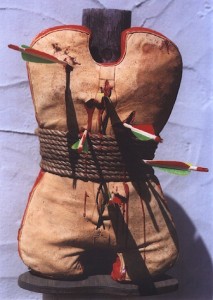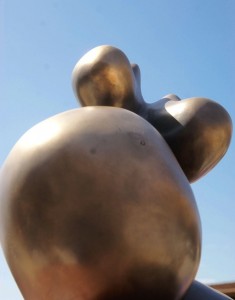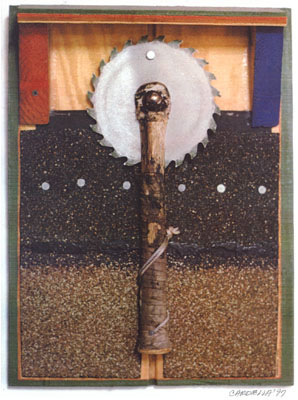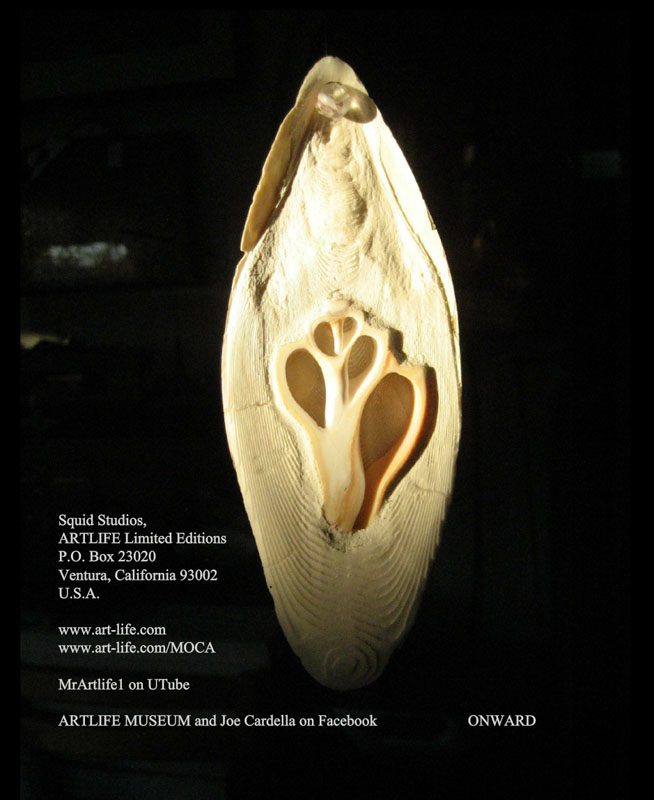Statement
“Art is a lie that enables us to realize the truth” —Picasso
Overall my work is a derivative of and/or a commentary on oxymorons, the concept of chaos in physics and the fine line we walk every day between reality and illusion. Images take form in paintings (both traditional and digital) and through the utilization of a variety of ceramic and mixed media processes .
I work back and forth between two-dimensional and three-dimensional formats often incorporating painted elements in a direct dialogue with sculptural forms. When I incorporate two-dimensional mixed media with clay it is with a conceptual approach where, symbolically, as with my use of color, I choose other materials or objects where they more specifically convey my ideas. I collect a lot of stuff. Stuff is equivocal to junk. Junk makes history. History makes art.
“It is complete nonsense to believe that flying machines will ever work.”
– Sir Stanley Mosely
Portraits from the series “Not the Last Supper” / CyberCeramics: An Explanation
Iíve long maintained an interest in exploring the possibilities of combining painting, digital imaging and ceramics, a seemingly unlikely alliance, but one I found intriguing.
In 1995 I found myself wondering if there was a way to combine the images I paint with “digital glazes” that I had been creating on my computer to a final format on ceramic tiles. It started simply enough: I placed actual unglazed and glazed ceramic tiles that I had formulated on a flatbed scanner, transferred them to files and then digitally manipulate the surfaces. For a while, these new images which found finality in a digital print, seemed ok. Although the images were fascinating in themselves, I was intrigued with finding a way to transfer those images back to the ceramic medium, which, at that time, had a more tangible reality to me. I explored several methods for transfer, and finally discovered a method (dye sublimation transfer) outside of traditional ceramic decals that completed the cycle thus bringing the digital surfaces back to their beginnings as glazed ceramic tiles. In the process, Iíve had the opportunity to help create a new ceramic approach which is referred to as a form of “cyberceramics.”
The extraordinary thing is how earthly world elements of clay, water and fire, found a partner in the perceived clean-room sterility of digital imaging. I often contemplated whether cyberceramics was just an excuse not to get dirty but realized that in one respect, itís just another technique in realizing images to forms. It is in this context that cyberceramics can be addressed on symbiotic levels. Initially Michael Hadley worked with me on his project as a digital imaging technical assistant. During the development of the images, at times we worked in a collaborative liaison. As the work progressed, evolved and became transformed into mixed media wall relief formats, Michael was instrumental in developing a new space for the works to exist in. Through countless conversations agreeing to disagree to agree, Michael actualized a conceptual gallery to house the portrait plates. The resulting gallery is his vision based on our conversations of space with the final tweaking of the gallery design being a collaborative effort.
The cyberceramic mixed media works represented here are selections from the series “Not the Last Supper” which are 13 portraits that act as both a homage to those individuals who have supported or affected my work with fired ceramic materials and/or as an homage to new forms of digital craft. Iíve been exploring alternative formats of portraiture for the past twelve years and these portrait formats have pushed the boundaries in actualizing my interest in reality and illusion. The “dining format” would not be possible without respectively referencing both forthright and subliminally the works of Leonardo Da Vinci, Judy Chicago, Jeanne Otis and other artists who have utilized dining formats as portraiture. I use the computer as a tool and this tool has in turn transformed my craft and my art. I am a member of INTERSECT (The Society for Electronic Craft Transformation) and fit into this international membership for my work deals with breaking the boundaries of traditional craft definition. The content I have been dealing with has remained a constant, but my format has been transformed via technology tied to social and personal economic issues along with a genuine curiosity in exploring the not possible.
These are objects of ideas not merely an aesthetic experience. The objects were meant to annoy, shake people out of habits of conventional thinking of how a plate exists in space. I thrive on exploring the unknown and Iím sure that my love of observing, listening and being open to change propelled me to be so obsessed with this project for over five years. To have the works go back to their original intent of spatial existenceóthat being cyberspaceófinalizes the whole experience.
In a way CyberCeramics is a form of abstraction taking the concrete object and transforming its physical qualities as well as the spatial qualities/relationships it traditionally existed in. The plate exists only on the screen in digital format taking up a whole new spaceócyberspace. Abstraction occurs in the concept of touch; from relying on actual physical qualities to implied surfaces engaging the viewer in another level of touch. Iíve been accused of mental masturbation to just not wanting to deal with the dirt, mess, etc. of real clay. But to me this project was one of stretching the limits of defined physical surfaces and to have a little fun with technology.
Itís a perverse idea that tweaks standard systems of visual organization going beyond traditional usage of materials as well as conceptual aspects of usage of materials. And at the same time it was a wonderful intellectual play on the material level of ceramics and a play on the exploration of a materialsí possibilities. (See Doc/MLA/Batesman and actual clay piece incorporated into cyberplate) Someone once referred to this project and the processes involved as “the emperorís new clothes” — intellectually clever but what does one do with the virtual images? My response was that many materials of the art making process can seduce us especially with their potential. This is the personal issue with how artists respond to particular materials for materials are indifferent. They do what the hands, the heart and the mind dictate with the dialogue between the material and the maker being of importance. With virtual craft a different space dictates a different way of seeing, touching and dialoguing.
The questioning of reality and abstraction led to the exploration of a visual reality (cyberspace) that can neither be seen nor described in the sense of traditional paradigms of reality but which we all conclude exists. There was a questioning of physical substance and perception. The end result was a deliberate conflict with traditional modelsóit even scared me, made me crazy asking myself is this “real” or not. I became obsessed with making the plates be “real” to my academic mind steeped in traditions of western definitions of art and made paper prints, prints on canvas, prints on acetate. I hung the acetate prints in window panes and cut up the prints into strips, wove the images with a simple basket weave technique then cut traditional vessels forms out of the woven mats. I made black and white ceramic decals and put images of plates on thrown plates and finally had the images transferred via a dye sublimation process to stoneware tiles and incorporated them in assemblages. All the while still looking at the images as to whether they were “real” or not. A separate reality.
I cannot say that this project was just an excuse for learning digital imaging for a good amount of the fine tuning of the images was technically done by Michael Hadley under my direction. But process played a key role in being an initial driving force. The process was of far more interest than the produced objects themselves. The objects were the records of the thoughts and the physical realization of the thought. The initial approach was also coupled with philosophical and conceptual levels and went the full run to the narrative and entertaining in final dining portrait format.
“Not the Last Supper” was a dematerialization of ceramics in general.
This work was a search for the questioning of what is real, the definition of reality, a questioning of space and the act of touch as well as the concept of touch in itself. It was about space and space is directly related to time. And I never had enough time to work fast enough or to work through enough physical objects.
I have been asked as to how this project related to me in terms of being a painter. My response was that of Iíve always been interested in peopleís responses to images. I think of Magritteís “The Treachery of Images: This is Not a Pipe”. I would show people prints of the cyber plates and their responses would be one of “gee, thatís a beautiful plate. Are those objects glued on or painted on or are they decals? How did you handle such small mosaic work?” (see Portrait of Don) All the questions related to the trompe líoeil aesthetic that only I was aware of. The objects in their own individual beauty elicited a response that made people think the objects were physically beautiful and it was interesting to see their reaction of disappointment when I told them the plates actually did not exist in our physical reality. Ah the treachery of images.
In responding to this project as an artist who works within the ceramic realm, I was interested in creating new surfaces beyond what are givens in traditional ceramic formats. Just the whole way of how the images are built in layers like sedimentation relates conceptually to historical elements of ceramics. So, like my predecessors who discovered the transformation of clay by fire and changing the perception of mud and how it exists in space, so does a scanner change the transformation of fired clay into cyberceramics and how it exists in space.
Although certain aspects of this work is part of the ceramic tradition, it is not only the materials or processes that interest me. Rather it is the potential for certain objects to exist in space and time and how that space affects our perception of the object, the synthesis of experience that motivates me. With that being said it is my hope that the interpretation of this work goes beyond the object.
I appreciate you taking the time to view the works.
Judith Cook
January 2000
Visit the INTERSECT web site at http://www.lexicon.net/world/intersect











